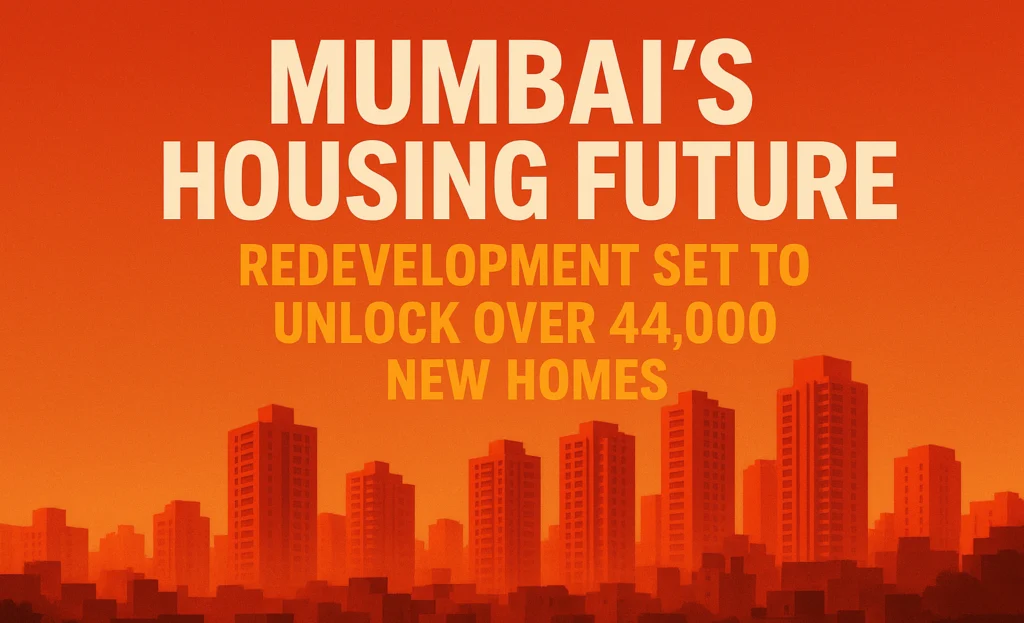The skyline of Mumbai is constantly evolving and much of its future growth is hidden within the aging structures of its existing housing societies. A new report highlights that society redevelopment, the process of replacing old buildings with modern, larger ones, is poised to be the dominant driver of residential growth, promising a massive injection of new housing stock into the city.
A multi-billion dollar transformation
According to a detailed market analysis, current redevelopment projects in the Mumbai region are on track to deliver an impressive 44,277 new homes by the year 2030. This monumental effort represents a combined market value estimated at over ₹1,305 billion. It’s a testament to the fact that with limited empty land, redeveloping existing plots is the most effective path to expanding the city’s housing capacity.
The data shows that this boom is already well underway. Since 2020, a remarkable total of 910 housing societies have officially signed development agreements. This collective effort has successfully unlocked nearly 327 acres of land potential across the city, utilizing old, unused plots to build modern, vertical living spaces.
The western suburbs lead the charge
The heart of this redevelopment activity lies in Mumbai’s Western Suburbs. High-density, popular areas, stretching from Bandra to Borivali, are set to receive the lion’s share of the new housing stock, accounting for a significant 73% of the total planned units. Micro-markets such as Borivali, Andheri and Bandra have emerged as the primary hotspots, demonstrating the greatest volume of redevelopment agreements.
In contrast, Central and South Mumbai have seen a much slower pace of activity. These older, core areas face unique hurdles, including issues like fragmented ownership, complicated legacy tenancy laws and the generally higher cost and complexity of entry for developers.
Economic benefits and market warnings
The free-sale homes created by these redeveloped projects are expected to provide a significant boost to the government’s coffers. Over the next five years, the state is projected to generate billions in revenue through stamp duty and Goods and Services Tax (GST) collected from the sale of these new apartments.
However, industry experts are also raising a note of caution. The rapid growth has created an overheated market, where the expectations of society members regarding new amenities and larger homes have grown disproportionately high. This pressure, combined with aggressive bidding by developers, is stretching financial commitments thin. Experts warn that unless deals are structured prudently and include adequate financial buffers, the long-term viability of some projects could be at risk, especially if the real estate cycle takes a downturn.
Redevelopment is inherently a lengthy process, often taking between 8 to 11 years to complete. Given this long timeline, clear titles, strong legal documentation and unified consent from all society members are essential factors that attract strong developers and ensure projects move forward without debilitating delays. This massive wave of construction promises a renewed, more modern city, provided the necessary prudence and financial safeguards are in place.
Also Read – ₹1,629 Crore Comeback: How a Long-Awaited Wadala Land Auction Will Reshape Mumbai’s Skyline
Disclaimer – This article is for informational purposes only, based on current market reports. Readers must perform their own due diligence and consult a qualified real estate professional before making any investment decision.


Write Your Comment